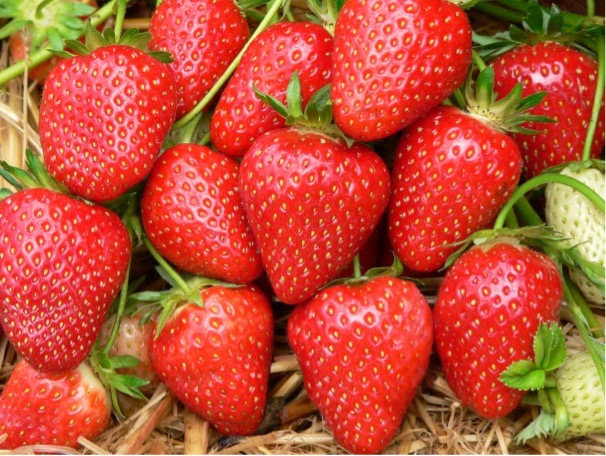Earliness
Productivity
Flavor
Disease Resistance
Shelf life
Appearance

Malwina is the latest ripening among the currently available strawberry varieties worth growing. The plant is very robust and vigorous, with dark green, medium sized, glossy leaves. Malwina blooms under the foliage and is self-pollinating.
Flowering and harvest period
Malwina is going to set new standards for late season varieties in the direct marketing segment. Depending on the production area Malwina should be planted between middle of April until middle of June. Under standard cultivating conditions, the peak season is some 22 days after Elsanta and 12 days after Florence. When straw covering is applied it ripens as late as about 30 days after Elsanta.
Fruit quality
The berries are large, firm and feature a glossy mid red. When picked red, their flavour is good, and excellent when picked fully ripe. Malwina is a pleasure to the eye, in the basket as well as in the punnet. Its aroma reminds us of “strawberries from grandma’s garden”, as a customer put in. Malwina withstands intense rain and is little susceptible to sunburn. About 3% of the fruits feature so called “leaved inflorescences. The genetic defect behind causes small leaves emerging from the fruits on about one fruit per plant.
Productivity
Yields for Malwina are about 10-15% lower as Elsanta, and about 20% lower when straw covering is applied. Percentage of large fruits is 85% (about 77% with straw covering). Which means the proportion of marketable Class 1 fruits is higher than with Elsanta. Picking rate of Malwina is about 10-15% lower, though, due to the short pedicels and the ample foliage.
Pest and disease susceptibility
Malwina is very hardy and resistant to diseases. For example, it is tolerant to verticillium and very little susceptible to fruit rot. Special spraying against thrips and strawberry blossom weevil is required. Protection with phosphor acid chemicals against Ph. Cactorum is recommended as well.